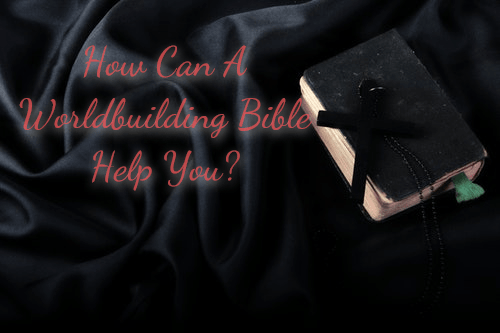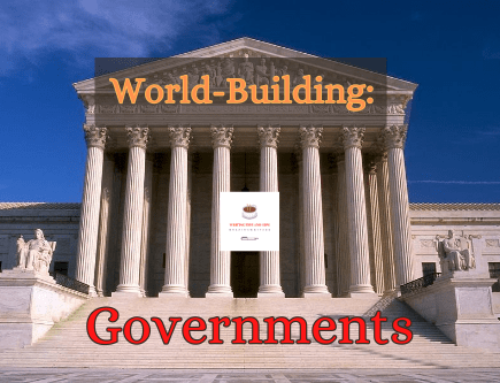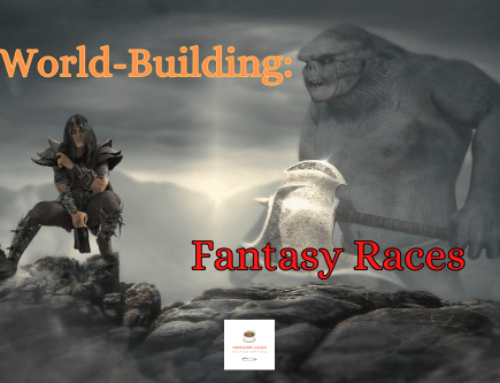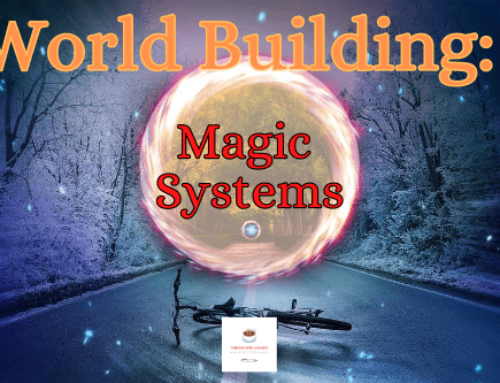You might be working on your big Sci-fi / Fantasy series and come across the advice to keep a worldbuilding bible. But what is it, and how can it help you?
What is a Worldbuilding Bible?
A Worldbuilding bible – commonly referred to as a series bible or show bible –
 is a writer’s organizational tool to keep track of the details in your novel or series. I created mine on Word and use it to keep track of all the changes or ideas I have while working on my W.I.P.
is a writer’s organizational tool to keep track of the details in your novel or series. I created mine on Word and use it to keep track of all the changes or ideas I have while working on my W.I.P.
The worldbuilding bible started as a tool for screenwriters to keep consistency with characters and arcs throughout a show.
It is meant to be an easy reference guide for keeping continuity.
I originally had a character who I named Henry, but later changed his name to Samuel. With the bible, I can better keep track of the name, helping me not confuse the names in later chapters when the character shows up.
Why Should I use a Worldbuilding Bible?
The most important reasons are consistency and continuity. As fantasy writers, we tend to pack our stories with tons of details.
So many details.
We want our worlds, characters, and societies to be believable.
If on one page your civilizations speak a form of elvish, then you continue through the story and come back to that civilization, and now they speak dwarvish, your society won’t be consistent or believable.
You lose your readers trust.
With a worldbuilding bible, you can keep track of all the information, every aspect of your world: Characters names and how to spell them, the languages of cultures, historical events, and anything your story may need.
When you move on to the next novel, you can build upon your worldbuilding bible, and look back to see what details you made cannon in the first novel. But…
What Goes Into a Worldbuilding Bible?
The simple answer is whatever your story needs. This is a project that is bound by the author’s creativity and what details are required.
Included in my own bible is summary/logline, story overview (synopsis), beat sheet, setting, characters, organizations, magic systems, and races. Organized in a way that makes the most sense for me.
Summary/logline
I like to have a brief summary or the working logline at the start of my worldbuilding bible. It’s a quick reference point of what the story is about.
Often just reading the logline can help shift my mind into story mode, which is helpful, especially if starting in a nonflow state. It doesn’t have to be the most in-depth.
A couple of sentences is fine here.
For example: “After years of war with the tamalir, the elvines have vanished off the face of Symphonia. One day Helana Glasglo, a 22-year old elvine woman, finds her way into the known world, uncovering long lost magic, lies, and war firsthand.”
Story overview (Synopsis)
This is where I go into more detail about what happens in each book of my series.
Each book gets its own synopsis.
It summarizes the whole story from beginning to end. It talks about every plotline and side story.
I use these pages to help me look back at what I have planned when I get stuck on where I am going. Sometimes, when writing the story, the characters will take over the plot and switch the intended direction, that is okay, I update the change in the overview.
I am not going to share my overview here for two reasons:
1. Spoilers
2. It is too long and would be a blog post of its own.
I will write a post about synopsis and will link it here when written.
Beat Sheets
This section covers the major beats of your story.
I specifically like to use Save the Cat! Beat sheets, but you can use whichever method you want. This section is a quick reference to the most significant points in the story and is an excellent way to organize the plot.
If you are not one for outlines, you may not have this section or will add to it as you write the story.
Setting

Setting is where I talk about the different locations within my world of Symphonia. I talk about the biomes and cities, the various provinces, which race controls where and everything in between.
I start with a basic summary of where my characters will travel within the novel and then separate it into more detailed descriptions of each place.
My setting summary: “Symphonia is a vibrant land filled with lush forests, mighty jungles, deserts – where electricity courses through grains of sand – and massive, snow-covered mountain ranges. Stone of the Dragon’s Heart follows our characters from the quaint and peaceful village of Ul’rog to the long-lost temple of Adna…”
Character
I would break this up into two parts:
the main characters and side characters.
For main characters, write down every detail that you can about them. Their height, age, hair color, eye color, hobbies, jobs, favorite music, everything you can think of about the character. Include their wants vs. needs, their motivations. Everything! Cloud Kitten Chronicles recommends marking the things that are cannon within your story already, so those details never change.
Side characters are easier. You don’t need as much information about them, just whatever is necessary for your novel. If a side character comes back at a later point, it’s important to remember any defining features.
I cannot count the number of times I wrote a side character, forgot their name, and had to reference back to the bible just to make sure I name them correctly.
Characters make your story, if any section is needed in a worldbuilding bible, it is this one.
Organizations
I use this section to keep track of the different factions within my world, what their purposes are, their motivations, and how they are viewed by the world. I keep a record of their uniform and often refer to this section to remember how I capitalize and spell each organization to maintain consistency.
Not every story will require this section, but I find it essential for the story I am telling.
Magic Systems
If you are writing a fantasy novel, odds are you have some kind of magic system, be it a hard or soft magic system is up to you, but this is the place where you put all the details of how that system works.
What is it based on? How can one perform magic? Can anyone use magic or just specific people? If your magic systems have rules, you better stay true to those rules, or magic will come off as a cheap trick to solve problems.
Here I keep track of the two different kinds of magic in my world, how they work, and what you can do with them. I list the spells, their names, and what they are used for.
For example: “Spiritual magic: control of one’s inner reality, based on emotion and control over one’s emotions.
Bhakti: A ball of spiraling white energy produced by focusing on an emotion of love.
Dhakka: Using the energy of love to redirect or push something away. Protecting the user of negativity.
Abhidra: A ball of spiraling purple energy fueled by hate. Has an explosive kick of power.”
Races
This section is also geared more for Sci-fi/Fantasy writers. Here you will keep track of the different races in your world.

I write down the names of the races and all details that make them unique, any special abilities, defining features, skills, and the like. List the places where they would live and what biomes they thrive in. Maybe in other locations, they will suffer more.
This is where all that information goes.
Conclusion
These are the sections that I include within my own worldbuilding bible, but you can add anything you may need for your story.
Some include a glossary of their made-up words or things that will help readers better understand their story. You can include maps, religions, holidays, timelines, there is an endless array of options.
It comes down to you as the author.
It is whatever will help you maintain consistency and continuity across your novel and series. It’s a fun project that helps define your world and bring it to life, in a way. But, the only way to truly allow your world to breathe is to complete that novel!
C. D. Baron
Latest posts by C. D. Baron (see all)
- What is The Novella? Why You Must Write One to Improve Your Skills! - 03/21/2021
- Wake Up! A Short Story (Work in Progress) - 02/07/2021
- My Top 5 Favorite Reads of All Time (So Far) - 01/24/2021




